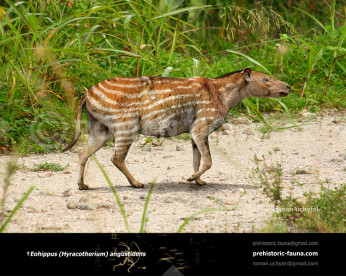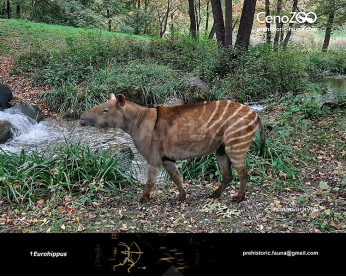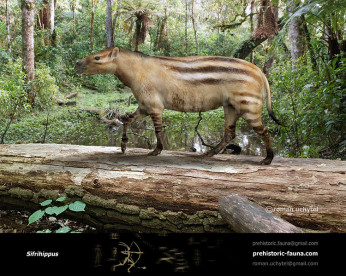Orohippus
471471
Orohippus (Orohippus (Marsh, 1872))
Order: Perissodactyla
Family: Equidae
Time period: early to middle Eocene (North America)
Size: 50 cm in length, 25 cm in height, 8 kg of weight
Typical representative: Orohippus pumillus
Orohippus is an extinct equid that lived in the Eocene. It is believed to have evolved from equids such as Eohippus, as the earliest evidence for Orohippus appears about 2 million years after the first appearance of Eohippus. The anatomical differences between the two are slight: they were the same size, but Orohippus had a slimmer body, a more elongated head, slimmer forelimbs and longer hind legs, all of which are characteristics of a good jumper. Its teeth were brachydont in height, but the development of flattened surfaces and shearing lophs on their molars suggests they were more a browser than a frugivorous eater. The outer toes of Eohippus are no longer present in Orohippus, hence on each forelimb there were four fingers (toes) and on each hind leg three toes.
Payment
You may use multiple payment methods to buy image such as credit cards, PayPal and bank transfer.
Orohippus (Orohippus (Marsh, 1872))
Order: Perissodactyla
Family: Equidae
Time period: early to middle Eocene (North America)
Size: 50 cm in length, 25 cm in height, 8 kg of weight
Typical representative: Orohippus pumillus
Orohippus is an extinct equid that lived in the Eocene. It is believed to have evolved from equids such as Eohippus, as the earliest evidence for Orohippus appears about 2 million years after the first appearance of Eohippus. The anatomical differences between the two are slight: they were the same size, but Orohippus had a slimmer body, a more elongated head, slimmer forelimbs and longer hind legs, all of which are characteristics of a good jumper. Its teeth were brachydont in height, but the development of flattened surfaces and shearing lophs on their molars suggests they were more a browser than a frugivorous eater. The outer toes of Eohippus are no longer present in Orohippus, hence on each forelimb there were four fingers (toes) and on each hind leg three toes.

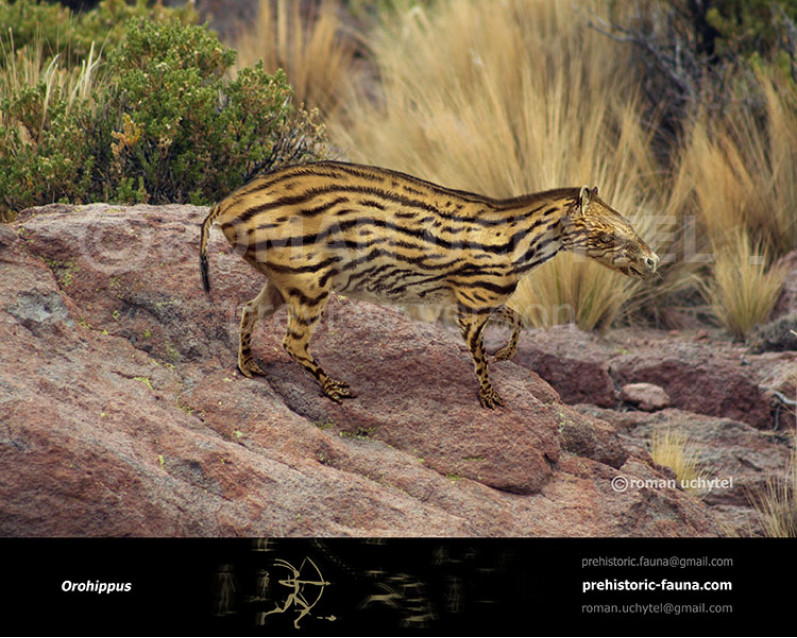
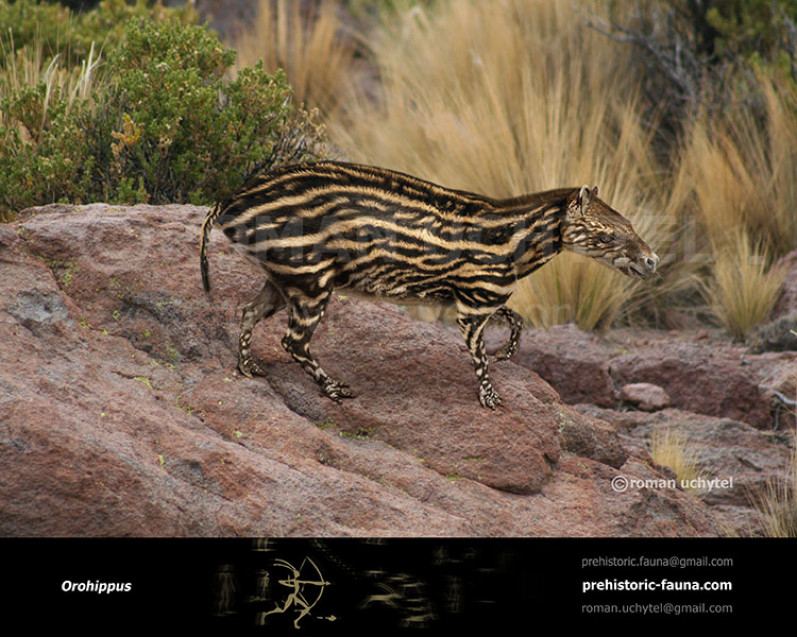
1-797x638.jpg)
-797x638.jpg)
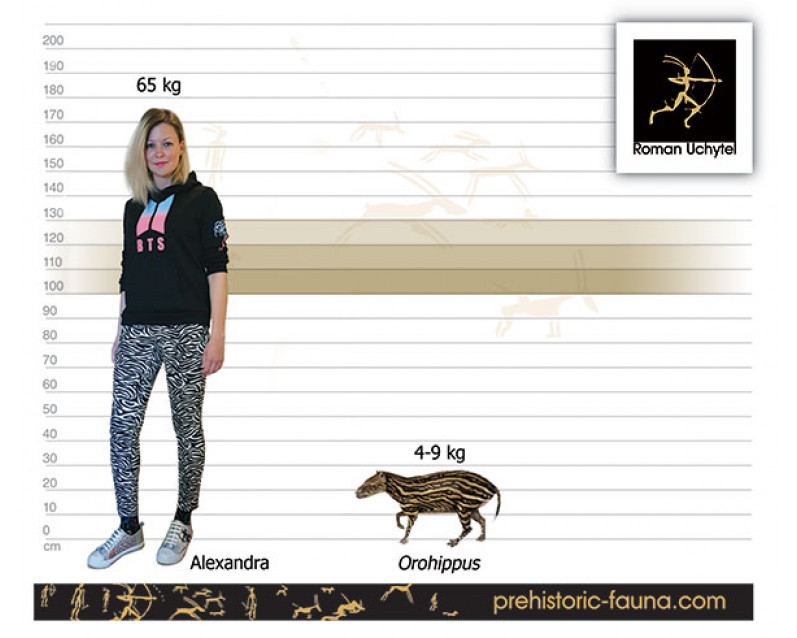


1-70x56.jpg)
-70x56.jpg)

